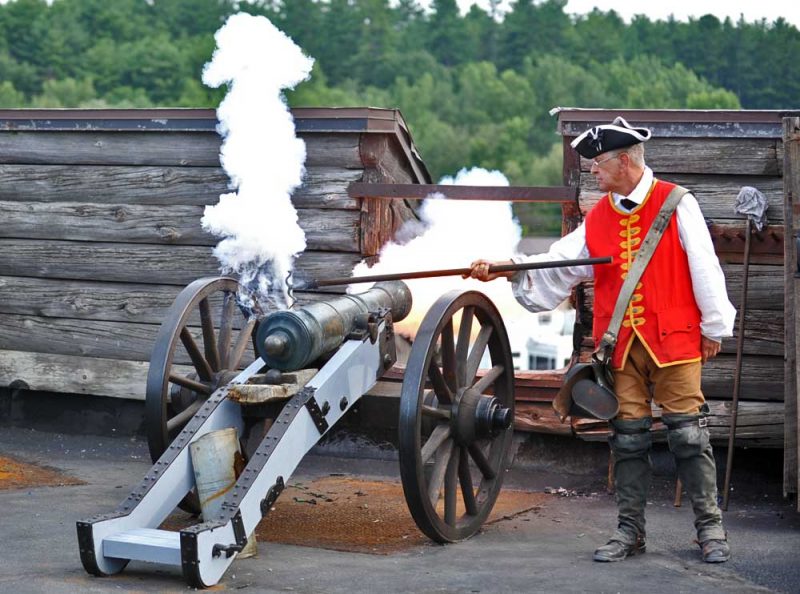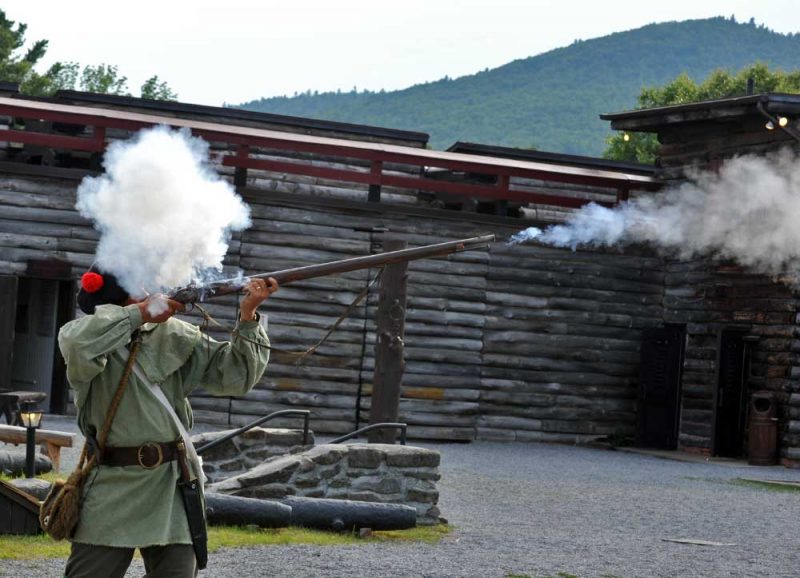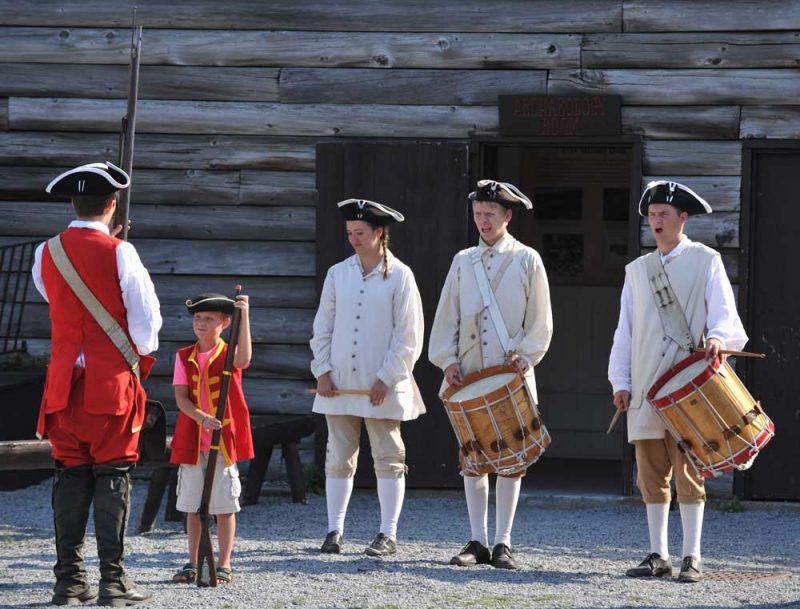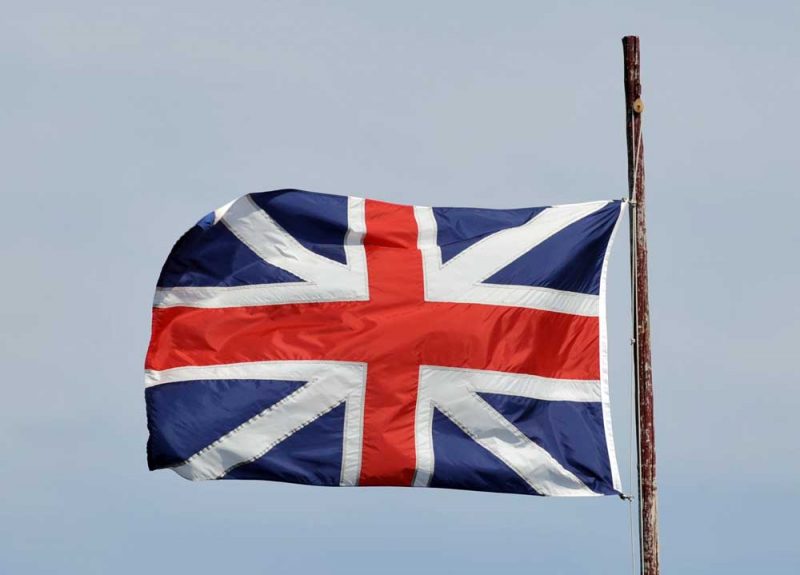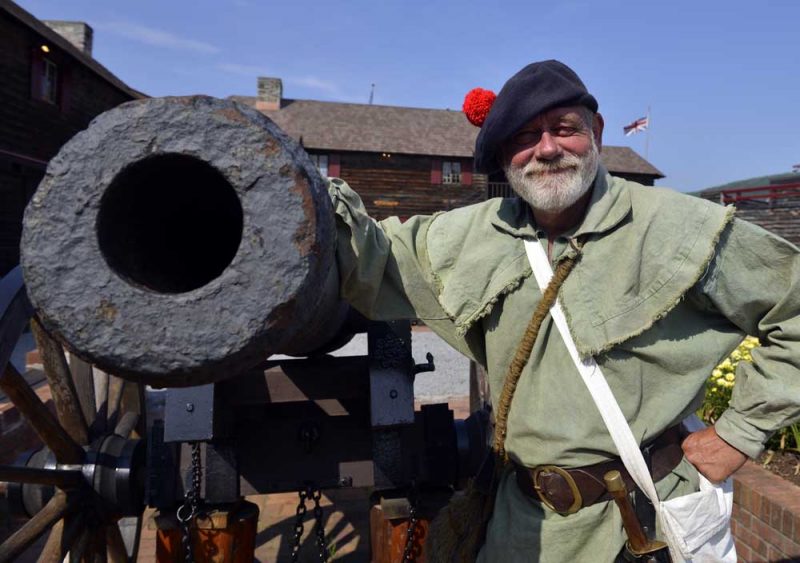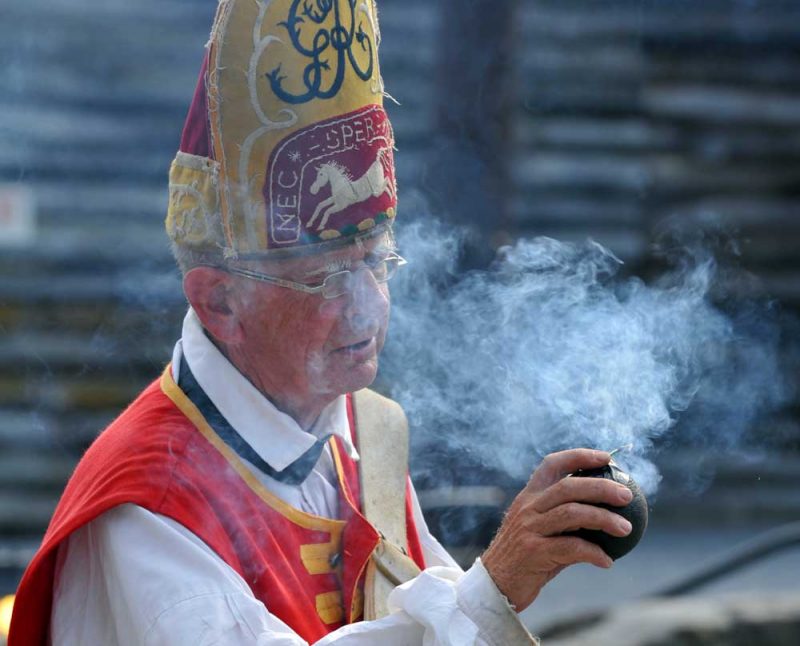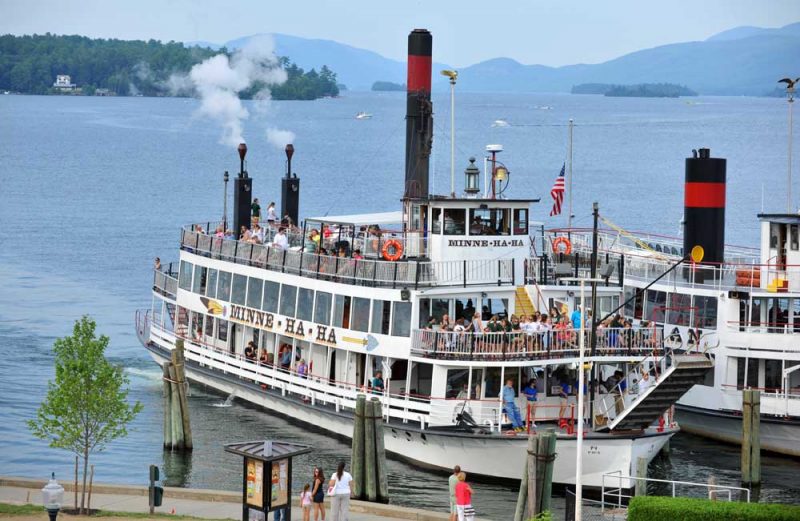The French Indian War never made it to my history time line until very recently following a visit to New York State. I cannot say that the school I attended went really big on the wars and battles fought on US soil, apart from a brief look at The Boston Tea Party!
After a visit to what is termed Up-State New York I discovered for the first time a more detailed history of conflicts fought on or around the time of the American wars of independence. My introduction to this period of history came as I visited a re-creation of a British fort complex called Fort William Henry on the shores of Lake George in The Adirondacks. This is an area that I liken to the British Lake District but on steroids, with far bigger lakes, mountains and very much on the plus side it appears around a fraction of it’s visitors.
The timber stone and earth fortifications laid out as it would have been around the year 1756 it is named after the two sons of the then King. The fort was the site of a notorious incident in 1756 where following a joint French and Indian attack the defeat inflicted on the British defenders who had after a long fight in the end surrendered the fort. The terms of which said that the British soldiers and their families would have safe passage out of the fort and away from the area. However due to a lack of understanding with their Indian cohorts the column was attacked the following morning with several hundred soldiers their wives and children slaughtered with many being scalped. 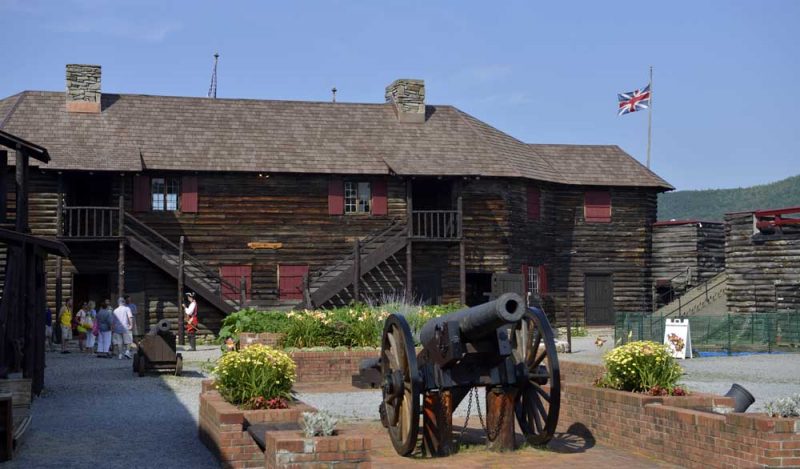
They were unable to properly defend themselves as one of the surrender terms stated that they could take their guns but could not take any bullets! This dark chapter was one of the worse of that period. The French and Indian War was in fact an extension to the Seven Year’s War but instead of being in Europe it was fought out in the colonies too. For nearly 70 years, England and France had been at war with just few periods of peace. At the beginning of the 18th century only the British and French were fighting over land in North America.
It is thought that more lives were lost in this conflict than during the American Revolution itself. The valuable fur trade was part of the reason for the attempted European land grab and the extended hostilities by both countries. Later in 1758, the British, under William Pitt, began to make peace with some of the Indian tribes and by changing their war tactics that they were accustomed to using on battlefields of Europe the British started to push the French out of what are now the Canada and US border areas. With Native Indian assistance they started push the French out of North America and with a massive defeat at Quebec in September 1759 the collapsed of the French was final. The end of hostilities was brought about several years later with the signing of The Treaty of Paris in 1763, which also ended the European Seven Year’s War.
Today the fort itself is a great tourist draw located as it is on the Southern shore of Lake George named after the King of course.
This area is a haven for boating; cycling, fishing, sailing and canoeing plus the chance to take a steam powered paddle steamer around the 32 mile long lake. It is not something that you expect to see in this mountain area but getting aboard one of these colourful craft that allow great views of the fort and the lake surroundings too.
Inside the fort there are activities for the children with the chance to dress up and even be drilled and marched in 18th century military style. The early American Rangers are present in their costume of that period, plus experience cannons and muskets being fired and even watch a British Grenadier throw a fused grenade. The area of the Adirondacks is very popular with citizens from the North Eastern US but less so by visitors from outside the US which makes it a great place to explore or spend time on the water or maybe hike in this huge natural parkland.
The former Olympic venue of Lake Placid is certainly a place to use as a base for touring and where you can hire canoes, bikes and camping equipment.
It is also of course a winter sports location and hosted the Winter Olympics in 1980 but May through to October is a time to experience the park in warmer temperatures plus that is some ten times larger than its UK version.
I really recommend these guys, they looked after me very well. The Golden Arrow Hotel Lake Placid: www.golden-arrow.com
Geoff
www.thetraveltrunk.net Facebook Twitter